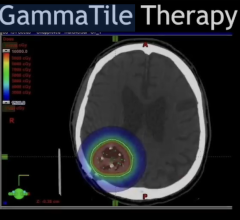
October 25, 2022 — A new study offers a new option to patients with oligometastatic prostate cancer who want relief from hormone therapy without compromising the risk of their disease spreading. In the study, patients who received radiation in addition to intermittent hormone therapy lived longer without their disease progressing, and they were able to take longer breaks from the drug treatments. Results of the phase II trial (EXTEND; NCT03599765) will be presented today at the American Society for Radiation Oncology (ASTRO) Annual Meeting.
This study is the first randomized trial to evaluate the impact of adding radiation to hormone therapy for patients with oligometastatic prostate cancer — meaning those whose cancer has spread throughout the body to five or fewer lesions, or metastases.
Because most prostate cancer cells rely on testosterone to grow, standard treatment typically involves therapy to deprive the body of the hormone. A growing number of studies indicate that local therapies like radiation and surgery combined with hormone therapy can improve outcomes for patients with oligometastatic disease, and the EXTEND trial is the first to demonstrate it in a randomized clinical trial.
“Using radiation for oligometastatic prostate cancer can result in excellent tumor control and good long-term outcomes, and it may allow us to give these patients long breaks from hormone therapy,” said Chad Tang, MD, lead author of the study and an associate professor of radiation oncology at The University of Texas MD Anderson Cancer Center in Houston.
Hormone therapy is an effective tool to extend survival for metastatic cancer patients, but it often causes difficult side effects, said Dr. Tang. Depleting testosterone can lead to low energy, impotency and hot flashes – what might be described as “male menopause” – as well as increased risk for cardiovascular disease, osteoporosis and mental health disorders.
EXTEND is a basket trial involving adults with five or fewer metastases from different types of solid tumors. The study from Dr. Tang’s team is the primary analysis of the prostate basket, which enrolled 87 participants who were on intermittent hormone therapy for prostate cancer. These patients were randomized to receive hormone therapy either with (n=43) or without (n=44) local therapy. Options for local therapy included radiation, surgery or cryotherapy to all sites of oligometastatic disease; all men on the trial received radiation therapy.
Patients received hormone therapy for at least two months before starting the trial, and each participant stopped hormone therapy for a planned break six months after they started the trial. Patients restarted hormone therapy at the time their disease progressed.
Researchers tracked the amount of time until patients showed evidence that their cancer had progressed, such as rising PSA. They also measured the amount of time that patients maintained normal testosterone levels after treatment before needing to restart hormone therapy.
The median follow-up was 22.1 months, and during that time, 41 patients’ cancers progressed. Those who received local therapy as well as hormone therapy experienced longer progression-free survival (median not reached vs. 15.8 months for hormone therapy-only; HR 0.25, 95% confidence interval 0.12-0.55, p<0.001).
Fewer patients in the combination arm had new lesions two years after treatment (33% vs. 41%, p=0.004). Patients in the combination arm also experienced normal testosterone levels longer than those who did not receive local therapy (p=0.03). Three severe (i.e., grade 3) side effects were observed in each treatment group.
The “potent synergy” between radiation and hormone therapy may be key to the combined treatment’s promise, said Dr. Tang. “Hormone therapy has been shown in multiple studies to synergize with radiation therapy to reduce prostate cancer cells’ ability to repair themselves from radiation-induced DNA damage,” he explained.
In addition to clinical outcomes, the research team also examined the immune stimulating effects of radiation. “In our study, we saw increased T-cell activation and other signals of greater immune activity in patients on the combined therapy arm but not in the hormone therapy-only arm.”
After a patient’s prostate cancer metastasizes, they typically receive continuous hormone deprivation. Dr. Tang said this study introduces a new paradigm of definitive radiation therapy to all of a patients’ oligometastases in tandem with de-escalated, intermittent hormone therapy as a means to preserve quality of life while still maintaining disease control.
For more information: www.astro.org


 May 02, 2024
May 02, 2024 








